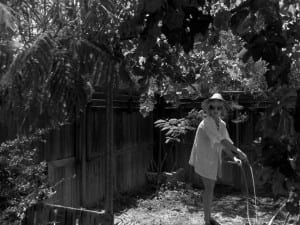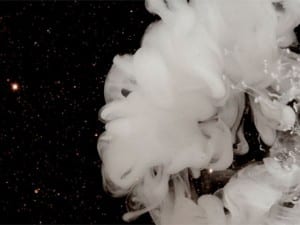Martin Veigl is an award-winning Austrian artist. His numerous compositions offer collaged portraits with an intuitive blend of colours and forms; a complementary colour palette draws attention to anonymous figures as they are caught in states of transition. Veigl has exhibited widely and his solo show is at Schnitzler Lindsberger Galerie, Graz until 10 April.
A: In Issue 99 of Aesthetica we featured Potpourri. This work is a really demonstrative example of your portraiture, particularly the “anonymous figures as they are caught in states of transition”. What is it that draws you to painting anonymous figures who never “look at” the viewer?
MV: Many artists paint their family and friends. I don’t want that! I couldn’t sell these works, because I don’t want my family members hanging in a collector’s living room. So these anonymous characters give me the freedom to focus on the painting process and not, for example, the resemblance of a friend’s nose.
My paintings are based on my street photographs. Without eye contact, it’s less intrusive and more natural. People are much more natural when they are unobserved or undisturbed.
A: The subjects of these paintings are often engaged in group leisure activities – what is it that draws you observing people in these situations?
MV: These gatherings of people from the urban or tourist environments are a kind of projection surface for phenomena that I can’t describe in any other way.
The people are like building blocks and the canvas is the playing field. I can rearrange them in my paintings or give them a new context; the painting is created in a playful process on the canvas.
A: Is there something about the outdoor locations that lends itself to the abstract elements that you bring to your compositions?
MV: In my earlier works was much more of the environment that was visible. It often happened, that I painted until the picture was dead, and I noticed that they were more dynamic and lively in an earlier stage.
The question “When is the right time to stop with painting?” led to a development over several years in which the focus was on the reduction of the essential elements of the picture. The brain itself completes the spaces.
It takes courage to overcome your own “horror vacui” and leave a picture half-finished. This interplay between free gestural painting and finely painted elements fascinates me.
For me, it’s a symbol of our overstimulated time. It’s just not possible to perceive everything. You’re floating in a rapid flow of stress, work, information and consumption. I want to show this perception!
A: Have your observations changed since the start of the COVID-19 pandemic – in other words, do you look at people/groups of people in a different way now? Or do you think that people’s interactions with each other will essentially be the same once we “return to normality”?
MV: There is no way back. In the first moment of the pandemic, I was annoyed because my topic at that point was anonymity in the public crowd, and it became obsolete.
Then I thought it won’t be that long – it’s just a passing trend. Over time, however, I realised that it was serious and that it really preoccupied me. Painting in particular is a very slow medium; it takes a long time to develop a new work or series. But I think I’ve found my way to deal with it. So I discovered new topics in my work like spacing, social vacuum or separation.
A: How do you approached these collaged portraits – is it planned in advanced or is it more of a free-flowing approach?
MV: There are concrete ideas in the beginning, but in the end everything is different. The gestural areas in particular make it unpredictable and I have to react individually to visual problems.
A: How do you decide upon the colour combinations and formations in your paintings?
MV: For me green doesn’t work at all! The colour combination is created according to my subjective rules. Of course, I have my favourite colour combinations. But they’re changing constantly. Inspiration can be almost anything, for example an impressive light mood in nature or a drawing from my four-year-old son. In the end, it just has to fit to the picture.
A: Why did you make the decision to paint these pieces, as opposed to draw them like some of your other artwork, such as the Overflow series?
MV: The drawings slow down my work rhythm enormously. Working with complex picture constructions and sharpened pencils in different degrees of hardness, quickly pushed me to my limits. This exorbitant, slow, meditative kind of drawing in combination with a hectic environment and the pressure to constantly produce something new is an acid test. From this perspective I find the fragmentary style in my drawings very fitting.
A: Congratulations on your solo exhibition at Schnitzler Lindsberger Galerie, Graz! What was it like for you to prepare for such an exhibition during the pandemic?
MV: Many Thanks! The exhibition has been extended until April 10th.
It’s always good to have a goal in mind, especially in difficult times. It’s a pleasure to collaborate with this gallery – a perfect match. I think we did a well-balanced exhibition that gives an overview of my work. And we have found excellent solutions in many details, such as the setup or the design of the showcases.
It’s a long and elaborately planned show and therefore annoying that there are many restrictions due to the pandemic, but I am very grateful that we were able to do it at this high level.
A: How did the experience differ from other presentations of your work, such as at Parallel Vienna?
MV: I love the Parallel – it’s a giant alternative art fair. It’s great to participate, but you can’t compare it to a solo exhibition in a gallery.
A: How does the rest of 2021 look for you and your art practice?
MV: Last year, during the COVID-19 pandemic, I had less contact in the art world and devoted myself more to my artistic process. I supposed that it would be very difficult to do something in the near future. But there are currently many new, collaborations planned, and I hope that we can do all of them.
I’m really looking forward to the solo exhibition at Galerie in der Schmiede in Linz and the exhibition participation at NÖDOK in St. Pölten, Schnitzler Lindsberger Galerie in Vienna, as well as Galerie 422 in Gmunden and Galerie Weihergut in Salzburg.
www.martinveigl.at
www.instagram.com/martin_veigl
Images: all works and photographs are courtesy of the artist.
The work of Martin Veigl appears in the Artists’ Directory in Issue 99 of Aesthetica. Click here to visit our online shop.

















